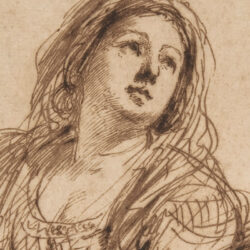Our team is celebrating Christmas with art historical insights, from the nativity scenes of the renaissance to the snowscapes of the impressionists. Below are 20 of our festive art history facts.
 Above: detail from Winter Landscape with Ice Skaters and Imaginary Castle by Christoffel van den Berghe, 1615-20
Above: detail from Winter Landscape with Ice Skaters and Imaginary Castle by Christoffel van den Berghe, 1615-20
1. Albrecht Dürer’s Adoration of the Magi appears to have a self portrait inserted in the centre, the long-haired artist depicts himself as the central king draped in gold.
2. Flemish Renaissance artist Pieter Bruegel the Elder featured one of the earliest snow landscapes in his painting The Census at Bethlehem (1566). This festive sight would have been inspired by the Flemish winter of 1565, one of the coldest on record.
3. The Nativity fresco by Giotto is one of his most influential works as it saw him move away from customary Byzantine artforms. He has also added in new animals at the manger that are now seen as traditional, such as the ox and donkey.
4. The first recorded Christmas card was sent to King James I in 1611, the words were written in the shape of a rose.
5. Claude Monet’s Snow Scene at Argenteuil is one of 18 paintings completed by the artist in the harsh winters of 1874-75. His use of impasto in the foreground displays the physical depth of the snow before him.
 Above: detail of the Nativity in the Hours of Isabella Queen of Spain, 1500
Above: detail of the Nativity in the Hours of Isabella Queen of Spain, 1500
6. Commissioning sculpted figures for a small scale nativity crèche dates back to the 13th century, though the most famous examples come from 18th century Naples. At the Metropolitan Museum of Art in New York, a selection of these figures are still used to decorate their traditional Christmas tree.
7. The earliest depictions of the nativity scene are found carved on the sides of Roman sarcophagi, dating to the 4th century.
8. The Mystical Nativity by Sandro Botticelli was influenced by his belief that he was living in the time of the Great Tribulation, nearing closer to the apocalypse. One of the most unusual features is the inclusion of small devil-like creatures piercing themselves and falling into the underworld.
9. Raphael’s masterpiece The Sistine Madonna (1513-14) was saved during the bombing of Dresden in World War II, but was stolen by the Soviet army who discovered its hiding place in Switzerland. The best known feature of the painting is the two contemplative putti at the bottom of the composition.
10. Julia Margaret Cameron was given her first camera for Christmas in 1864.
 Above: Winter Landscape in Holland by Barend Cornelis Koekkoek, 1833
Above: Winter Landscape in Holland by Barend Cornelis Koekkoek, 1833
11. The Adoration of the Shepherds by Caravaggio (1609) is notable for presenting the holy figures as ordinary people, rather than using the dramatic and celestial features of renaissance art.
12. Saint Nicholas is often depicted in paintings and religious icons with red and white attire, leading figures such as Father Christmas and Santa Claus to be given robes of this colour. The costume that we recognise today is most noticeable from the mid 19th century onwards.
13. The first official Christmas cards were sent by Queen Victoria in the 1840s. In the United States, official Christmas cards from the White House were not used until 1953.
14. The Adoration of the Shepherds (1640) by Guido Reni was one of the last paintings to be composed by the artist, remaining in his studio after his death in 1642.
15. The Nativity at Night by Geertgen tot Sint Jans uses chiaroscuro to allow a glow from the infant Jesus. Light emitting from the Christ child is linked to a vision by 14th century mystic Saint Bridget.
 Above: detail from a snowy woodcut print by Utagawa Kunisada, 19th century
Above: detail from a snowy woodcut print by Utagawa Kunisada, 19th century
16. The Lord of Misrule was a popular character at noble festivities, leading the ‘Festival of Fools’ day in early January. An engraving of the event by Pieter Bruegel the Elder depicts a riotous scene, all fuelled by inner spontaneity rather than influences such as alcohol.
17. Fra Angelico’s The Annunciation at the Convent of San Marco in Florence is one of his most well known versions of the biblical scene. It is notable for displaying his sense of realism by setting the Virgin Mary and Angel Gabriel outdoors. In this version, depth is added by the architecture, opposed to the traditionally flat Gothic composition of the figures indoors with the Virgin enthroned.
18. Norman Rockwell was allowed to attend art school after his parents were impressed with his drawing of Scrooge from Charles Dickens’ A Christmas Carol. He has since been credited with creating the modern American visual ideal of Christmas.
19. One of the most credible self-portraits of Leonardo da Vinci at age 30 can be found in his unfinished Adoration of the Magi (1481).
20. Renoir had a strong dislike of cold weather, stating to an art dealer “Why paint snow? It is a blight on the face of Nature!” His 1868 composition Skaters in the Bois de Boulogne was a rare subject matter for the artist.
 Above: detail from The Annunciation by Peter Candid, 1585
Above: detail from The Annunciation by Peter Candid, 1585
How can we help?
If you have any questions about festive art history facts and art restoration, please do not hesitate to get in touch. As part of our service we offer a nationwide collection and delivery service. E-mail us via [email protected] or call 0207 112 7576 for more information.

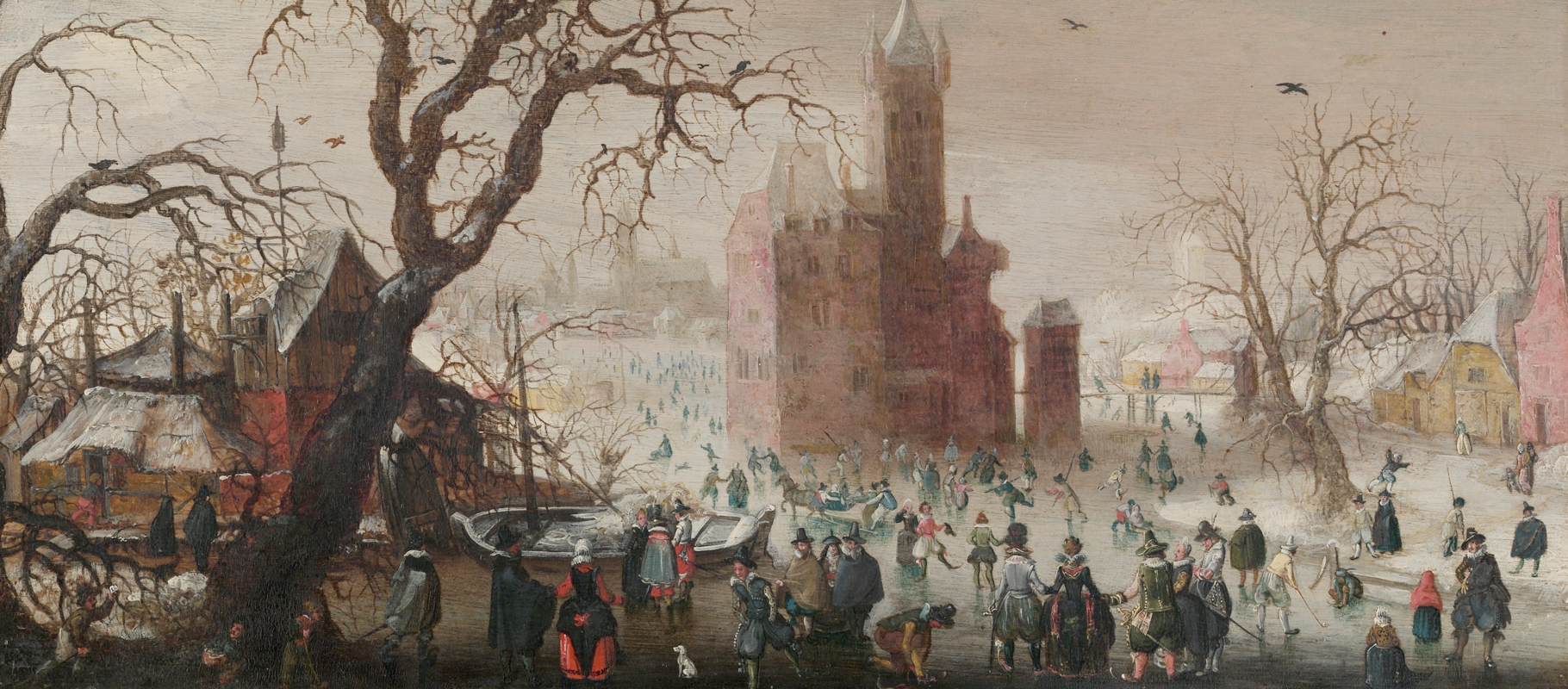 Above: detail from Winter Landscape with Ice Skaters and Imaginary Castle by Christoffel van den Berghe, 1615-20
Above: detail from Winter Landscape with Ice Skaters and Imaginary Castle by Christoffel van den Berghe, 1615-20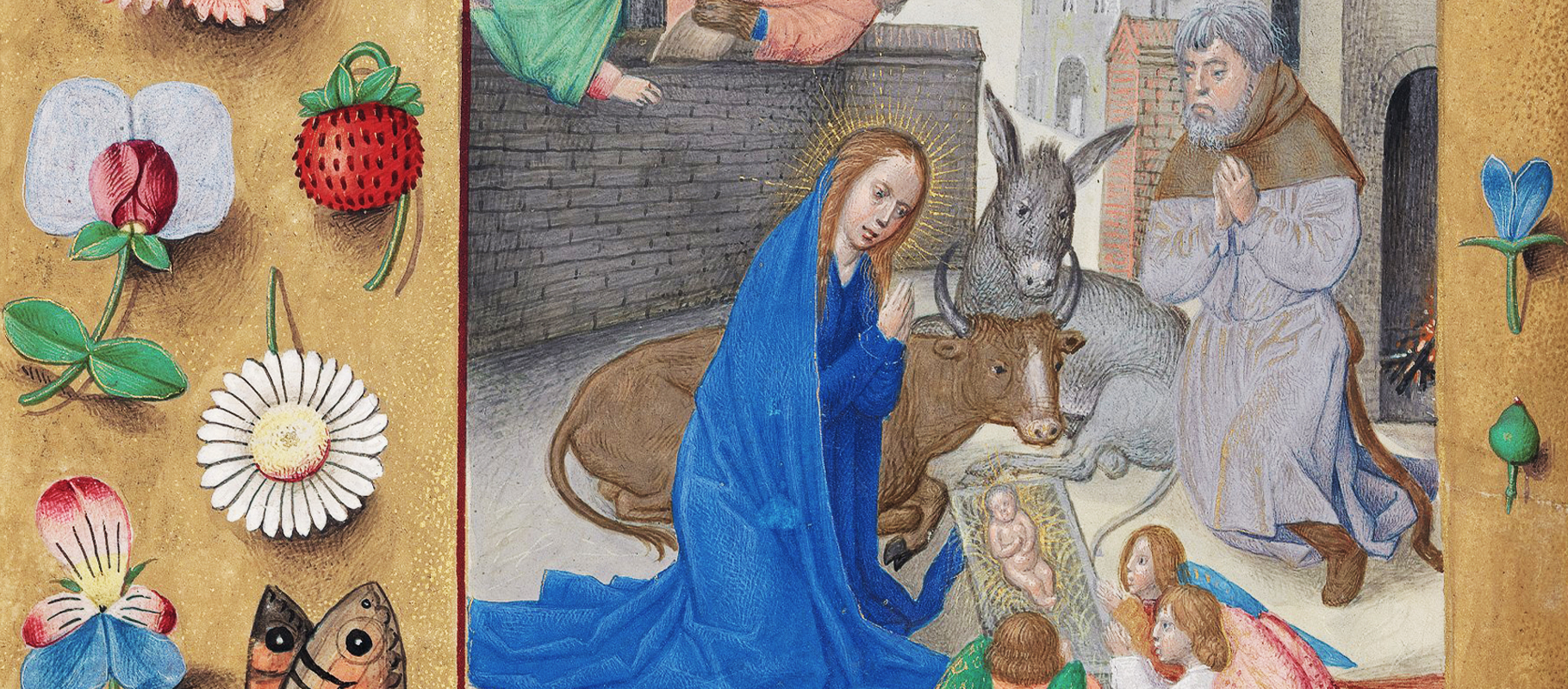 Above: detail of the Nativity in the Hours of Isabella Queen of Spain, 1500
Above: detail of the Nativity in the Hours of Isabella Queen of Spain, 1500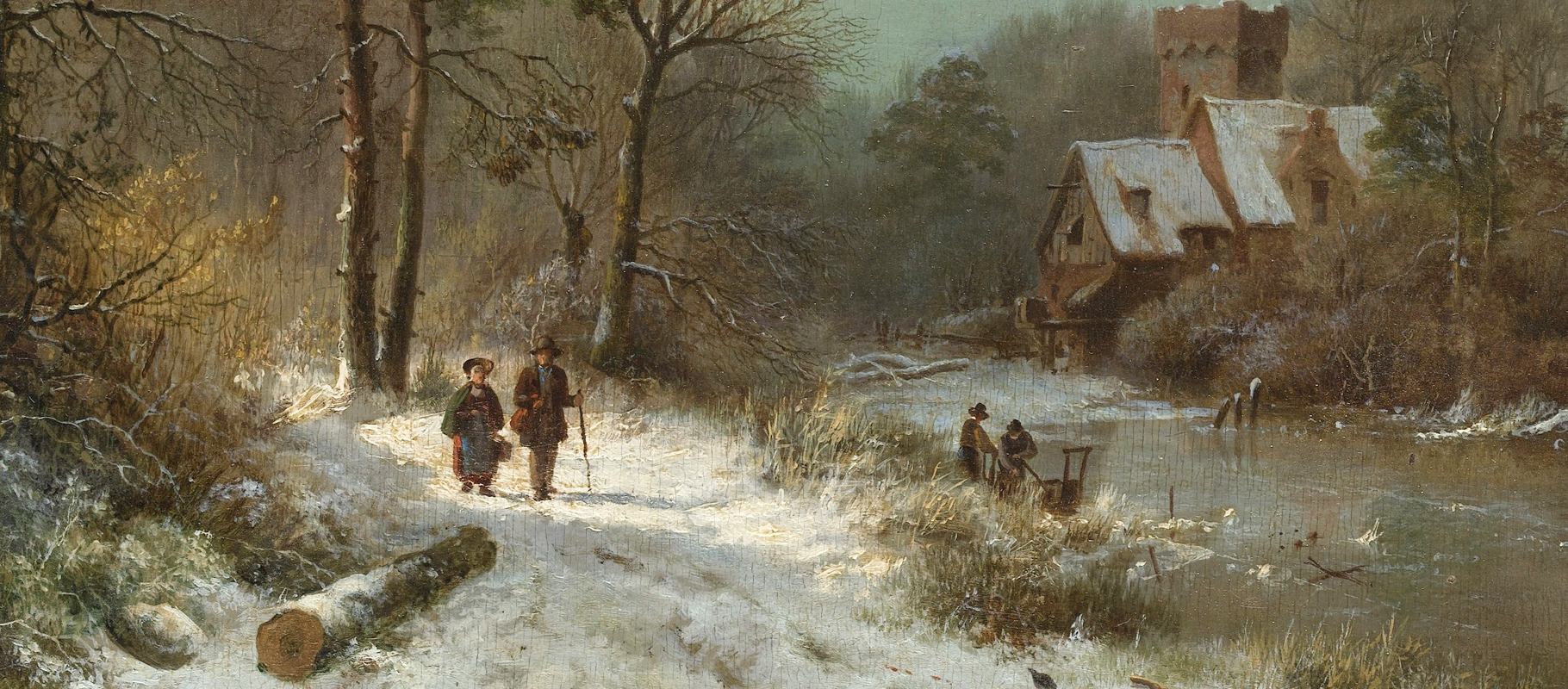 Above: Winter Landscape in Holland by Barend Cornelis Koekkoek, 1833
Above: Winter Landscape in Holland by Barend Cornelis Koekkoek, 1833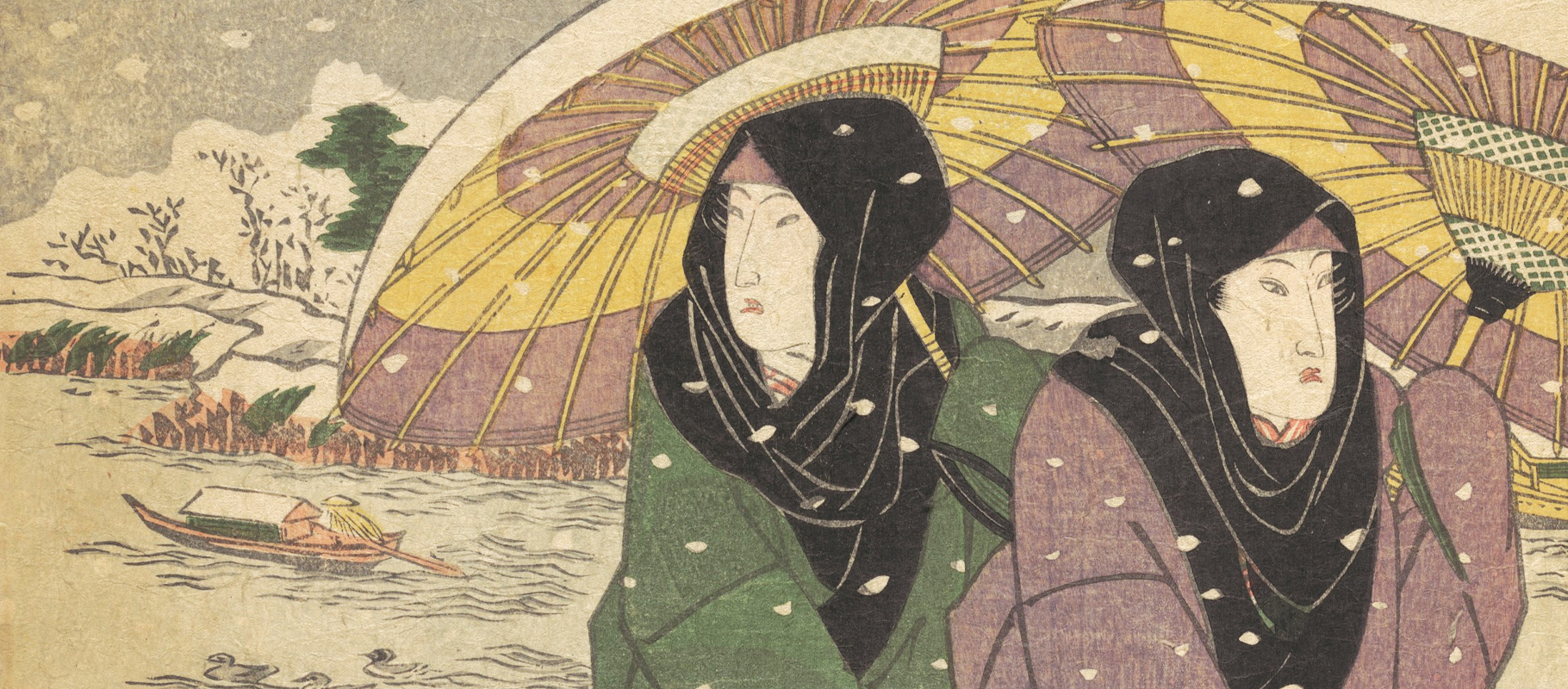 Above: detail from a snowy woodcut print by Utagawa Kunisada, 19th century
Above: detail from a snowy woodcut print by Utagawa Kunisada, 19th century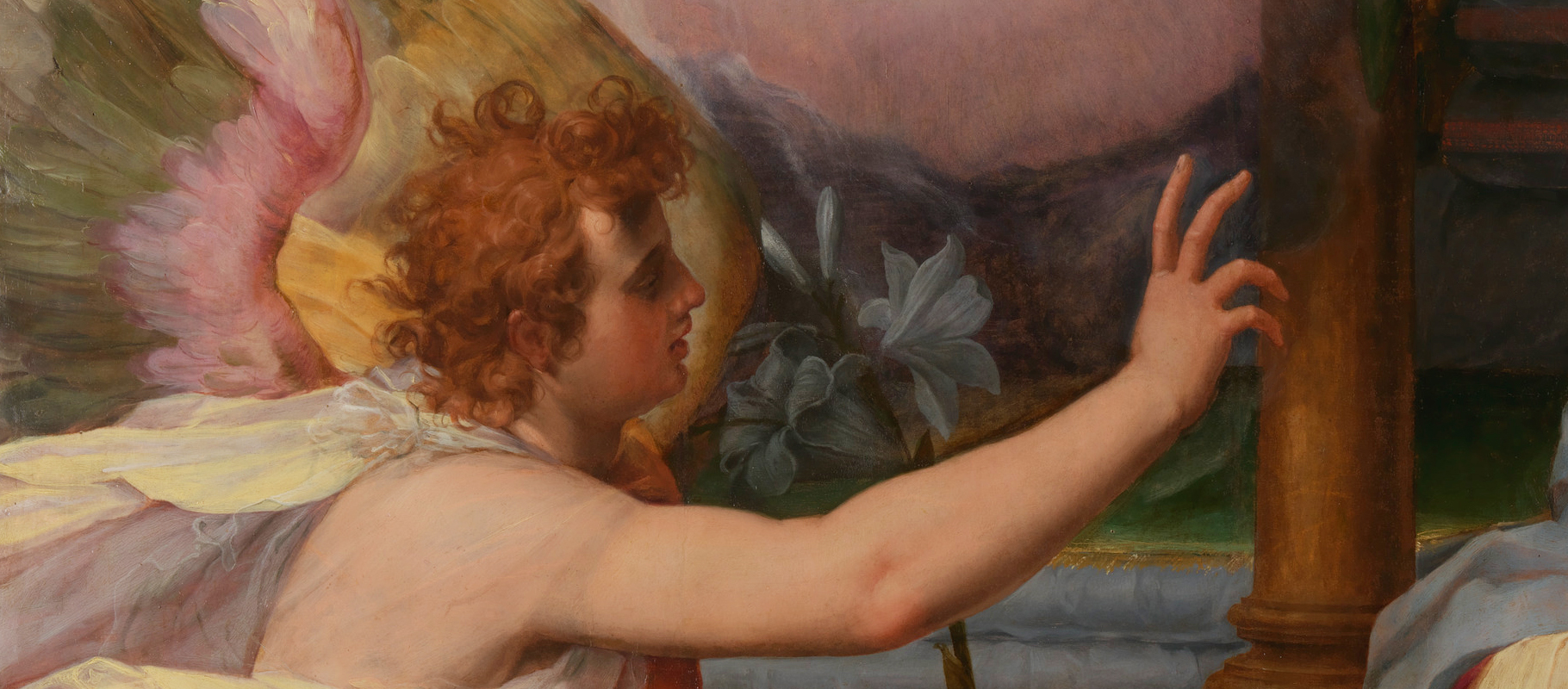 Above: detail from The Annunciation by Peter Candid, 1585
Above: detail from The Annunciation by Peter Candid, 1585




